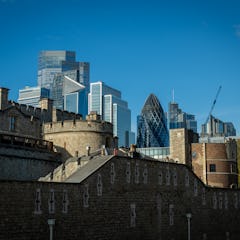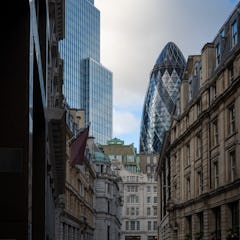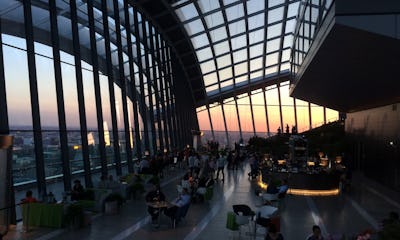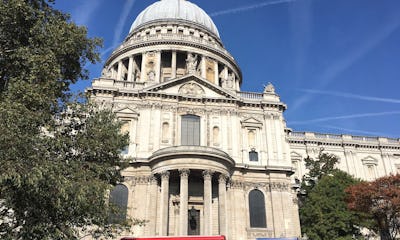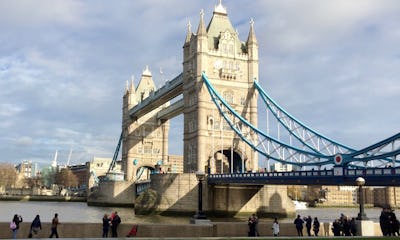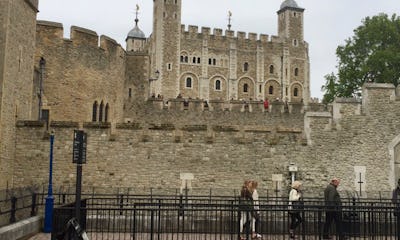City of London is London’s historical and financial centre, dating back to Roman times. Although it is primarily a business district, it is also home to many of London’s most famous sights, including the Tower of London, Tower Bridge, and St. Paul’s Cathedral.
In the heart of London lies a district that differs in many ways from the rest of the city. The City of London is the oldest part of the city and simultaneously a modern business hub. Here, centuries of history and contemporary architecture exist side by side. The City has its own administration and long-standing traditions, making it a unique part of London.
Two Londons – A City Hidden Within a City
Few tourists realise that London contains two separate cities. The City of London is a small area, roughly one square mile, in the midst of the metropolis. Although its name can be confused with Greater London, the City operates as its own administrative unit. It has its own coat of arms, police force, and mayor, and it is not directly under the jurisdiction of the Mayor of London.
The area’s history goes back to Roman times, when Londinium was founded on the banks of the Thames. The Romans built a protective wall around it, which gave the City a strong position in the following centuries. In the Middle Ages, the City obtained special trading and administrative rights, which it has managed to retain to this day.
A significant moment came in 1066 when William the Conqueror took control of England. He confirmed the City’s independent rights in exchange for its loyalty to the Crown. Thus, the City’s status was cemented within the realm’s system.
Later, Westminster became the centre of government, and London expanded around the City. Although Greater London now operates under its own municipal administration, the City still follows its own rules. For example, the City sends its representative to Parliament to protect its privileges.
Traditions live on in everyday life: for instance, the monarch still formally requests permission before visiting the area. The City’s dragon symbol adorns many buildings and landmarks throughout the district.
The City of London is, therefore, a fascinating mix of history, autonomous governance, and international finance—a place where the past and present meet.
Sights – History and Modern Architecture Side by Side
The sights of the City of London span all eras of London’s history. Perhaps the most famous landmark is the Tower of London, a medieval fortress and royal prison whose roots go back to the Norman period. Next to it stands the iconic Tower Bridge, whose towers and suspension system have become symbols of the city. Although the bridge crosses the river to the south bank, it is officially part of the City.
Another historical highlight is St. Paul’s Cathedral, whose grand dome still dominates the City skyline. Designed by Sir Christopher Wren, the cathedral was completed in the late 17th century, and its viewing galleries offer panoramic views of London.
The City is also renowned for its modern architecture. Today’s financial district is characterised by skyscrapers such as The Gherkin, The Walkie Talkie, and The Cheesegrater. At the top of the Walkie Talkie building, you’ll find the Sky Garden, a popular public garden and observation platform accessible for free (requires booking). The upper floors of the Gherkin also offer dining and spectacular views. London’s highest free viewing platform, Horizon 22, is located in the City at 22 Bishopsgate.
Historical Details Amid Everyday Life
Although modern architecture dominates the skyline, many of the City’s lanes still exude a palpable sense of history. Leadenhall Market, a beautifully covered market hall in the shadows of skyscrapers, dating back to the Middle Ages, is famous from numerous films including Harry Potter.
Additionally, the Bank of England and the Royal Exchange have played pivotal roles in London’s financial history for centuries. They serve as reminders of the City’s status as a global trading hub.
Culture at the Barbican
In the northern part of the City lies the Barbican Centre, one of Europe’s largest arts complexes. Its bold, brutalist concrete architecture is divisive, but its program is extensive and varied. Here you can enjoy classical music, theatre, film, and art exhibitions throughout the year.
Everyday Life in the City
Above all, the City is the centre of working life. On weekdays, the district is full of business professionals, whereas on weekends it quiets down, and many restaurants and shops close their doors.
After work on weekdays, people working in the City gather in cosy pubs to unwind. The City also offers high-quality restaurants and stylish cafés that complement its modern energy.
Practical Tips for Visitors
The City is compact and easily navigable on foot. Parts of the London Wall still remain visible in the area, and following the wall is a great way to sense the historical atmosphere.
The Thames Path walking route follows the riverbank, connecting several key attractions. Millennium Bridge, which links St. Paul’s Cathedral with the Tate Modern, provides splendid views of both the river and the city’s skyline.
Why You Should Experience the City of London
The City of London offers travellers a unique opportunity to delve into London’s history while experiencing the pulse of a modern metropolis. The Roman legacy, medieval privileges, and contemporary financial architecture converge here in an exceptional way. Although compact and walkable, the area is teeming with things to see, including historical landmarks, futuristic skyscrapers, art and culture, and charming streets and markets. The City is a place where London’s story truly unfolds for every visitor.

